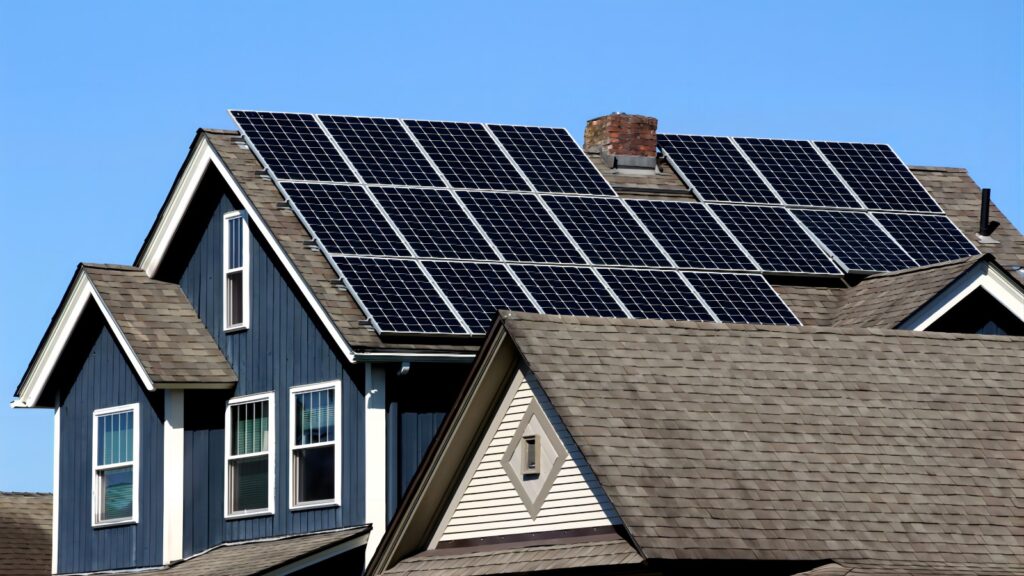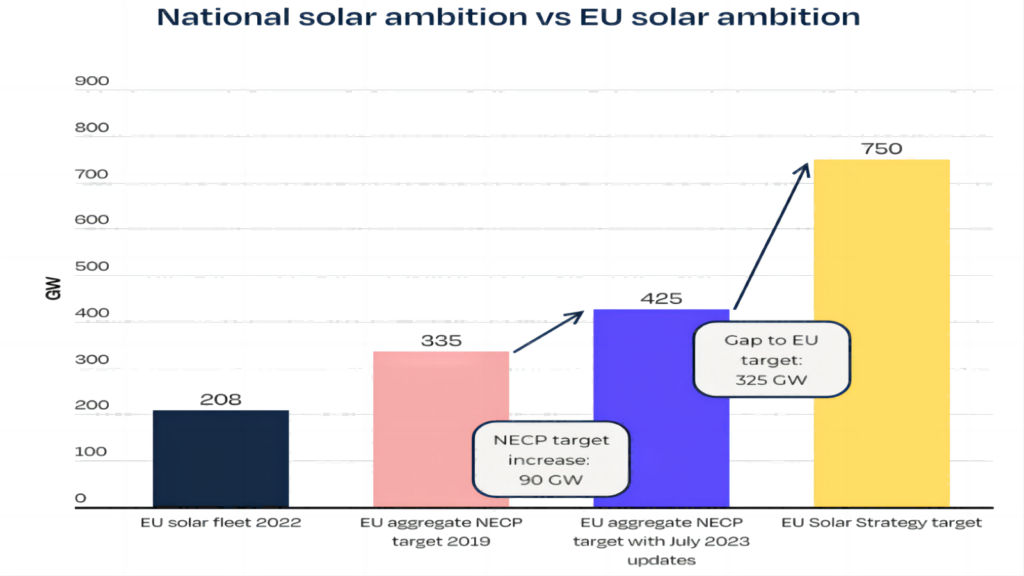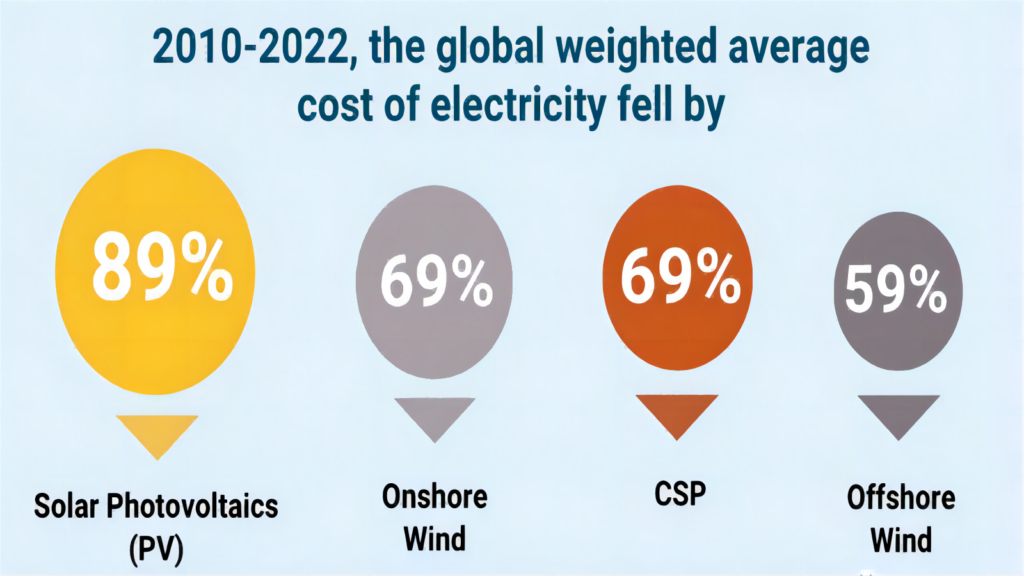Solar Energy(PV)Industry News
French start-up HoloSolis collaborates with German research organisation Fraunhofer ISE
In order to facilitate the establishment of its photovoltaic production line in France, French company HoloSolis has entered into a strategic collaboration agreement with German research organization Fraunhofer ISE.
Innovators EIT InnoEnergy, IDEC Group (a real estate firm specializing in the rooftop market), and French solar producer TSE founded Holosolis.
A solar cell and module production line with a 5 GW annual capacity is what Holosolis intends to construct. The cooperation aims to manufacture affordable photovoltaic modules across Europe using TOPCon solar cells.
By 2025, the plant, which is situated in Sarreguemines close to the German-French border, is anticipated to be operating. The plant’s size will progressively increase to 10 million PV modules for the residential and commercial markets annually.
The two businesses will also collaborate on research and development for the European market’s sustainable manufacture of solar cells and modules.

Big Suppliers News
Tongwei became the biggest winner of A-share PV companies in terms of revenue and net profit in the first half of 2023! It not only became the top player among the 14 companies with gross operating revenues exceeding 1.3 billion euros, but also took the leading position among the 10 companies with net profits exceeding 380 million euros.
In terms of gross revenue, Tongwei climbed to a new height continuously with 9.41 billion euros, which is nearly 1.3 billion euros higher than that of the following LONGi Green Energy, and more than 2.54 billion euros higher than that of the third-place JinkoSolar, so it can be said that it occupies the absolute leading position in terms of revenue.
Net profit, Tongwei shares are also among the top, its net profit of up to 1.69 billion euros, smoothly more than LONGi Green Energy, TBEA 1.17 billion euros and 950 million euros. Of course, Tongwei also have to be alert to, JA Technology, Sun Power, JinkoSolar, Trina Solar’s growth rate of more than 100%, the growth rate is much faster than the Tongwei 8.5608%, which means that the Tongwei shares of the “leading position” may be challenged in the future.
According to public sources, Tongwei’s success is not just the success of a single business, but the successful integration of the strengths of multiple business segments. Its business includes not only silicon modules, but also the construction and operation of photovoltaic power plants, etc. Such a diversified business model enables it to make full use of the synergies between the various business segments, withstand market risks, and achieve stable and sustained growth.
EU National Solar Development Plan Updates
Recent revisions to National Energy and Climate Plans (NECPs) have been submitted by a number of European nations, and the EU aims to add 90GW of installed solar power capacity by 2030.
According to a recent analysis by SolarPower Europe, by the year 2022, the EU will have 208GW of installed solar capacity. By 2030, the EU wants to have 335GW of installed solar capacity, according to the 2019 NECP report.
After 12 nations submitted updated NECPs, the EU raised its objective for installed solar capacity by 90GW to 425GW by 2030. Eight nations will meet the new goal for 2030 at least three years sooner.

In its amended NECP, Lithuania dramatically raised its aim to 5.1 GW by 2030, an increase of more than 500%. Finland (133.3%), Portugal (126.7%), Slovenia (1059.%), and Sweden (117.9%) also raised their targets by more than 100%.
Spain recently modified its National Energy Policy (NECP), increasing its 2030 solar PV target to 76 GW (94%).
Four EU nations have also already met their 2030 solar target, including Estonia (0.4GW), Ireland (0.4GW), Latvia (0GW), and Poland (7.3GW). 19 nations will probably reach their goals during the next five years, with Malta (0.3GW) and Belgium (8GW) on track to accomplish so this year.
It is expected that Italy (79GW), Lithuania (5.1GW), Portugal (20.4GW), and Slovenia (3.5GW) would achieve the updated targets between 2027 and 2030.
Germany has pledged to build 10GW of home solar capacity annually. At least 2GW of this is anticipated to come from the fabrication of solar modules, according to the German government.

Prior to this, the European Commission had a lofty goal of installing 750GW of solar power by 2030. However, nations are increasingly raising their goals. According to SolarPower Europe, the EU will have more than 900GW of installed solar capacity by 2030 based on current trends.
PV Price Trends
Levelised Cost of Electricity (LCOE) decline in the PV industry
A study on the price of producing energy in 2022 was produced by the International Renewable Energy Agency (IRENA). The levelized cost of electricity (LCOE) for the solar photovoltaic (PV) industry has decreased, according to the analysis, by 89% between 2010 and 2022 and by 3% in 2022.
According to the paper, The Cost of Renewable Electricity in 2022, the levelized cost of electricity (LCOE) for the photovoltaic (PV) industry decreased by 76–89% in various nations.
The LCOE for solar PV decreases from $0.445/kWh in 2020 to $0.049/kWh in 2022, which is around half the LCOE for offshore wind.

The fossil fuel price crisis accelerated the competitiveness of renewable power.
Solar power generation is becoming more affordable, however module merit is not recognized
The decreasing prices of solar module manufacture and installation are a major contributor to this drop. The cost of crystalline silicon solar modules supplied in Europe decreased by 91% between 2009 and 2022, according to the report, and the average cost of installed projects was 4% lower in 2022 than it was in 2021 and 83% lower than it was in 2010.
With average prices increasing by 4-6% between 2020 and 2021, this most recent data actually reverses the pattern of slightly higher crystalline module prices from the previous year, indicating that prices across the industry are returning to their long-established trend of declining over time. The cost of these modules increased by 6% between 2020 and 2021, but only by 1% the following year, making many areas of the sector more cheap. At the same time, “high-efficiency” module prices have also increased, albeit at a far slower rate than in prior years.
The expenses associated with O&M for solar modules also reflect this trend. In the United States, O&M expenses for 3.9 GW plants decreased by 58% from 2011 to 2021, to as little as $13/kW annually, according to the report. This is comparable to the $10/kW O&M expenses in Europe, which in 2017 were said to be as low as $9/kW annually in Germany. Since more solar projects are becoming economically viable due to declining O&M costs, this trend may lead to increased investment in the industry.
The report’s authors use Germany as an example and note that maintenance costs for solar installations decrease by 15.7–18.2% for every doubling of PV generating generation in that country. This implies that the cost of managing each project decreases as there are more active initiatives, which may promote more investment.
Reference:
A-share photovoltaic company half-yearly analysis of 14 revenue of more than 10 billion, 10 net profit of more than 3 billion!
https://solar.ofweek.com/2023-09/ART-260009-8420-30609290.html
5GW! France to “add” another photovoltaic module factory
https://solar.in-en.com/html/solar-2427946.shtml
European multinationals revise energy and climate plans! Solar share rises again
https://solar.in-en.com/html/solar-2427923.shtml
Global solar LCOE cuts costs by 89% over a decade! Module prices down 91 per cent
https://solar.in-en.com/html/solar-2427945.shtml

Will Agrivoltaics Affect Crop Growth?
Agrivoltaics combines solar energy and agriculture to reduce up to 700 tons of CO₂ per MW, improve water use, and boost crop growth for sustainable farming.

6.5 Billion Loss Hits Photovoltaics: Reshaping or Elimination?
In 2025, the photovoltaic market may see a turnaround as some companies take early action. A €6.5 billion loss is driving businesses to explore new growth areas like energy storage and hydrogen. Which giants will break through? Industry transformation is accelerating!

What’s New in Solar Energy (March 2025)
March’s solar news highlights include rooftop solar meeting two-thirds of global demand, China’s market reforms potentially boosting solar demand and module prices, France revising solar targets in PPE 3, and challenges in Europe with declining capture rates and price volatility.

Zero-Investment Solar Projects: How to Earn Passive Income Through Rooftop Leasing?
Monetize your idle rooftop and earn stable annual rent! With the photovoltaic rooftop leasing model, businesses can generate long-term revenue without investment, reduce operating costs, and achieve a green transition.

How to Optimize Photovoltaic Power Plant Operations with AI and Big Data
This article explores three methods of using AI to enhance power generation revenue and reduce operation and maintenance costs in intelligent photovoltaic operations.

Solar Module Costs May Rise by 10% in 2026! In-Depth Analysis of CBAM’s Impact on the Industry
Table of Contents Introduction to CBAM 1. Why Did the EU Introduce CBAM? As the challenges posed by global climate change intensify, governments worldwide are accelerating their efforts to achieve carbon neutrality. The European Union, a leader in global carbon reduction initiatives, introduced



